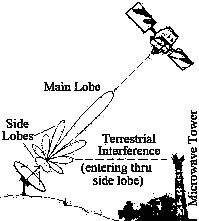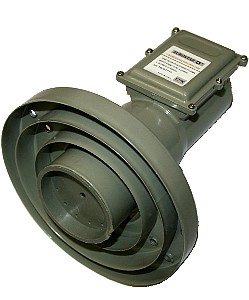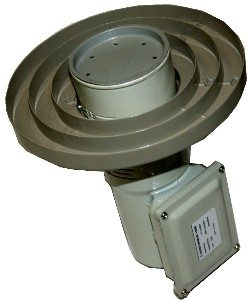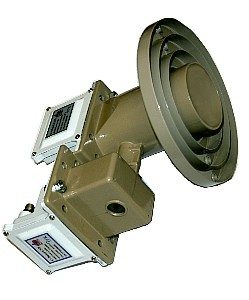



We now carry a variety of anti-interference (Wimax) feeds for our C-band antennas. Terrestrial interference from a microwave tower will usually enter the feed system through the side and rear lobes. For your reference, the radiation pattern of a parabolic antenna is shown above, and yes, although counter-intuitive, interference can also enter from the rear of the antenna. The wave guide of the feed (cylindrical part) does an excellent job of attenuating all frequencies below 3.4 GHz because it was designed with this cut-off frequency in mind. The diameter of the wave guide determines the cut-off frequency, meaning, a smaller diameter wave guide will have a higher cut-off frequency. Unfortunately, all unwanted signals above the cut-off frequency will enter the feed system and cause reception problems.
At the moment, the largest source of terrestrial interference for C-band operators is caused by wireless carriers transmitting between 3.4 – 3.6 GHz. Symptoms of terrestrial interference include:
1. If you are less than 1 mile from the microwave tower, nearly all satellite transponders in the direction of the tower will be washed out. In the opposite direction of the tower, only one polarization (H or V) will be severely affected.
2. If you are less than 10 miles from the microwave tower, you will only experience interference on a few transponders and on only one or two satellites (in the direction of the tower), while the rest of the satellite signals will appear normal.
3. If you are more than 10 miles away from the microwave tower, it is unlikely that you will suffer from any interference.
The main symptom of terrestrial interference in all cases will be an SNR that jumps from a normal reading to something less. For example, if your antenna registers 12.0 dB in the absence of interference, then the SNR might jump between 12.0 and 10.0 dB for mild interference. For extreme interference, it will jump from 12.0 to 0.00 dB.
The solution to this interference problem is to incorporate a microstrip band pass filter in the LNB that passes only the frequencies 3.7 – 4.2 GHz and rejects all others. We now carry a variety of such feeds (single LNBF, dual LNBF and orthomode) with band pass filters to improve satellite reception and we will slowly be phasing out our stock of old feeds (3.4 – 4.2 GHz).
You can find the anti-interference feeds here:
There is no need to suffer from Wimax interference any longer!


 )
)